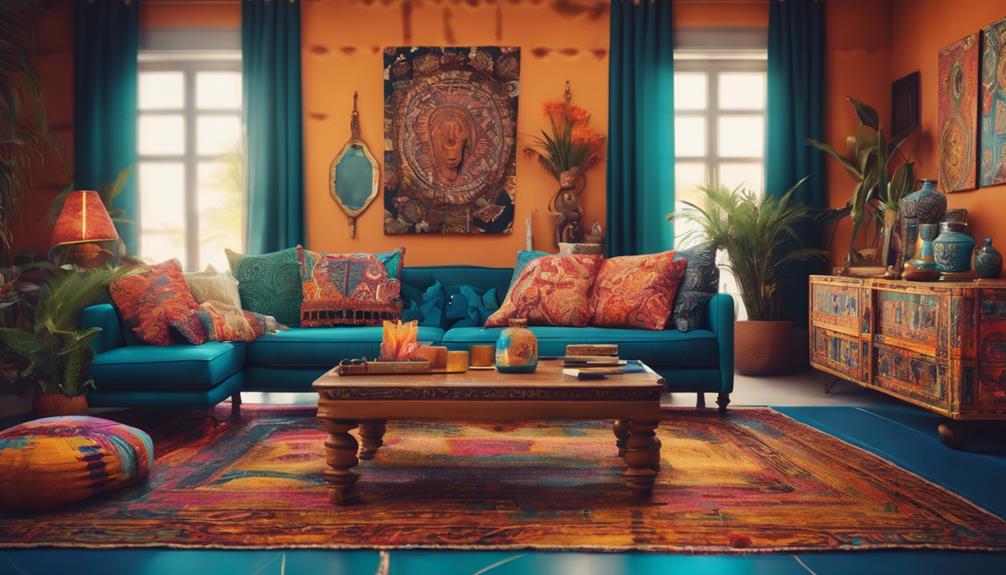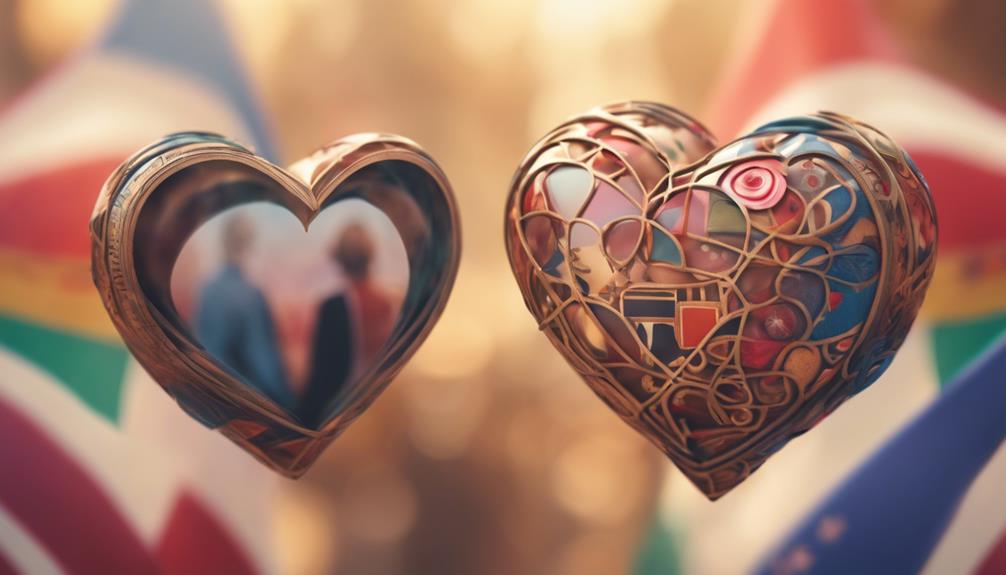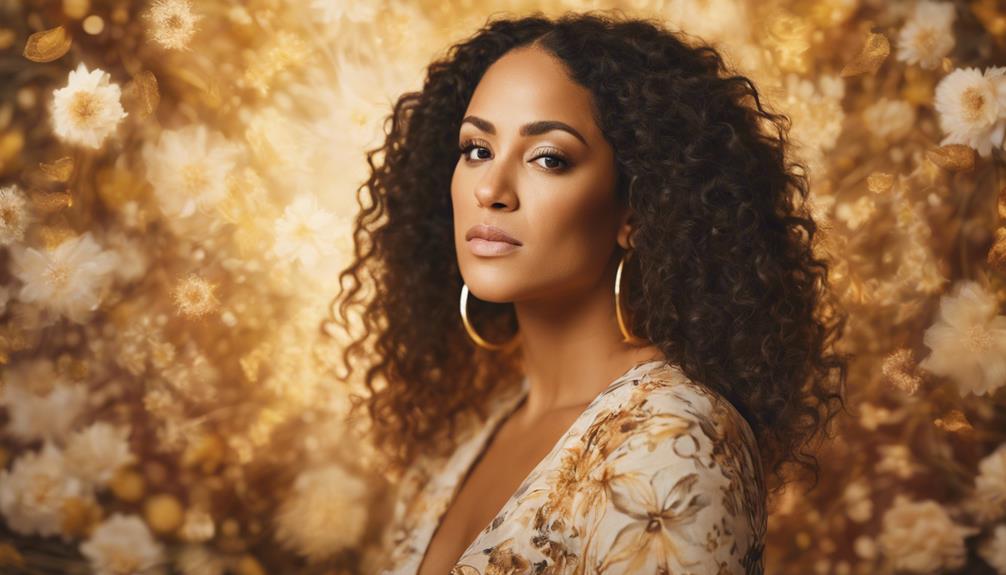Cross-cultural couples seeking to blend their diverse backgrounds must prioritize open communication and mutual respect. By incorporating symbolic rituals and customs from both cultures, they can create a harmonious and meaningful shared identity. Compromise and flexibility are essential, as is understanding and respecting each other's cultural values and practices. By embracing their unique cultural differences, cross-cultural couples can craft a distinctive and meaningful celebration that honors their individual heritages. As they navigate the complexities of blending traditions, they may discover new ways to foster unity and appreciation for their cultural differences, and ultimately, create a richer, more vibrant cultural tapestry.
Key Takeaways
• Open and honest communication is essential for cross-cultural couples to understand and respect each other's traditions and values.
• Finding common ground between cultural expectations and customs helps couples create a harmonious blend of their backgrounds.
• Incorporating symbolic rituals and customs from both cultures creates a unique and meaningful wedding celebration that honors both partners' heritages.
• Compromising and respecting each other's traditions helps couples navigate cultural differences and find a balance that works for both partners.
• Embracing the richness of diverse backgrounds and creatively incorporating unique customs from both sides helps couples craft a distinctive and memorable wedding celebration.
Merging Family Traditions Successfully
When cross-cultural couples start integrating their family traditions, they often find that open and honest communication is the key to successfully blending their customs and creating a harmonious union. By compromising and respecting each other's family customs, couples can create a harmonious blend of traditions that honors both backgrounds.
This is especially important when it comes to wedding ceremonies, where incorporating symbolic rituals and customs from both cultures can create a meaningful and inclusive experience for everyone involved. Blending traditions successfully requires open communication, compromise, and a willingness to find common ground between family traditions.
Balancing Cultural Expectations
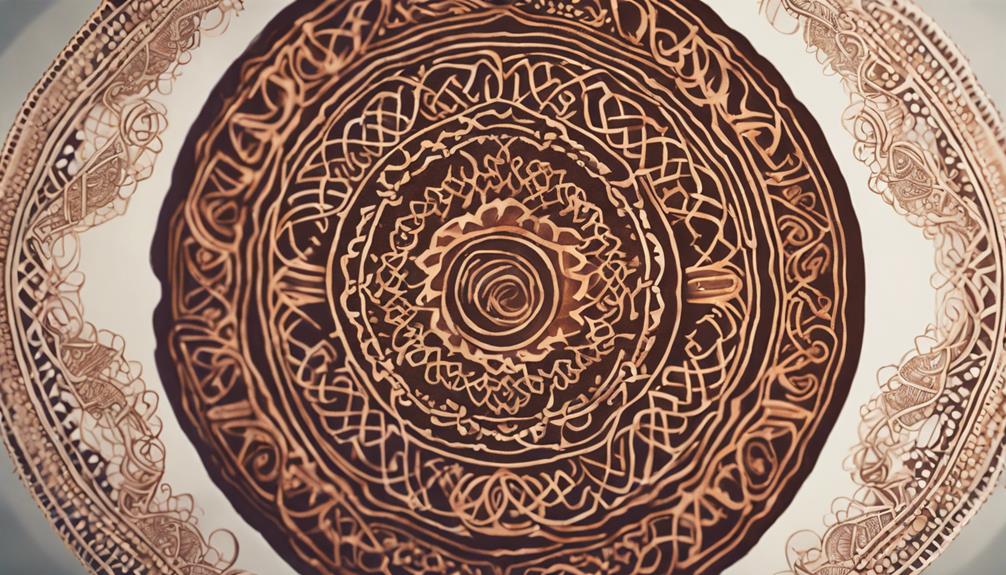
As cross-cultural couples navigate the complexities of blending traditions, they must find common ground between their differing cultural expectations, ensuring that both partners feel respected and valued. Balancing cultural expectations involves open communication and compromise to guarantee both cultures are respected. Understanding each other's cultural values and practices is key to managing differences.
Cultural sensitivity plays a vital role in managing expectations and traditions. Couples must be willing to listen, learn, and adapt to each other's cultural norms. Family traditions, in particular, can be a sensitive topic, as they often hold deep emotional significance. Successful blending of traditions requires mutual respect and a willingness to embrace diversity. By doing so, couples can create a unique cultural identity that honors both partners' backgrounds. This blending of traditions fosters a deeper understanding and appreciation of each other's cultural values, ultimately strengthening their bond.
Incorporating Unique Customs Together
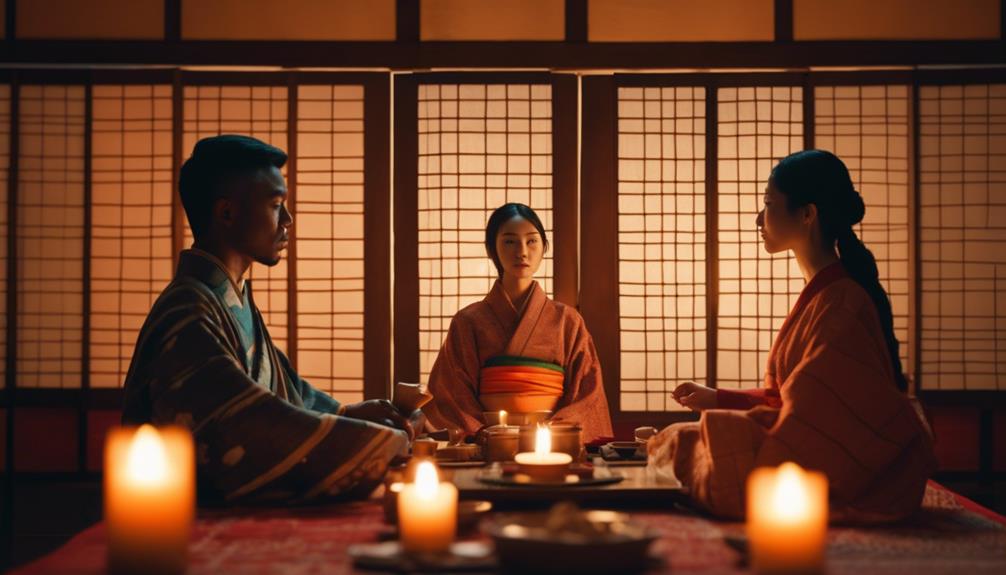
By embracing the richness of their diverse backgrounds, cross-cultural couples can creatively incorporate unique customs from both sides, crafting a distinctive and meaningful wedding celebration that honors their heritage.
Couples blend cultures by incorporating traditional attire from both backgrounds, such as combining a kimono with a sari. They integrate diverse rituals and ceremonies from each culture to create a harmonious wedding experience. For instance, a couple might incorporate a Hindu puja ceremony alongside a Christian blessing.
| Cultural Element | Description |
|---|---|
| Traditional Attire | Incorporating attire from both cultures, such as a kimono and sari |
| Diverse Rituals | Integrating rituals from each culture, like a Hindu puja ceremony and Christian blessing |
| Cultural Symbols | Combining cultural symbols, such as using a specific flower or color significant to both cultures |
Embracing Diversity in Wedding Planning
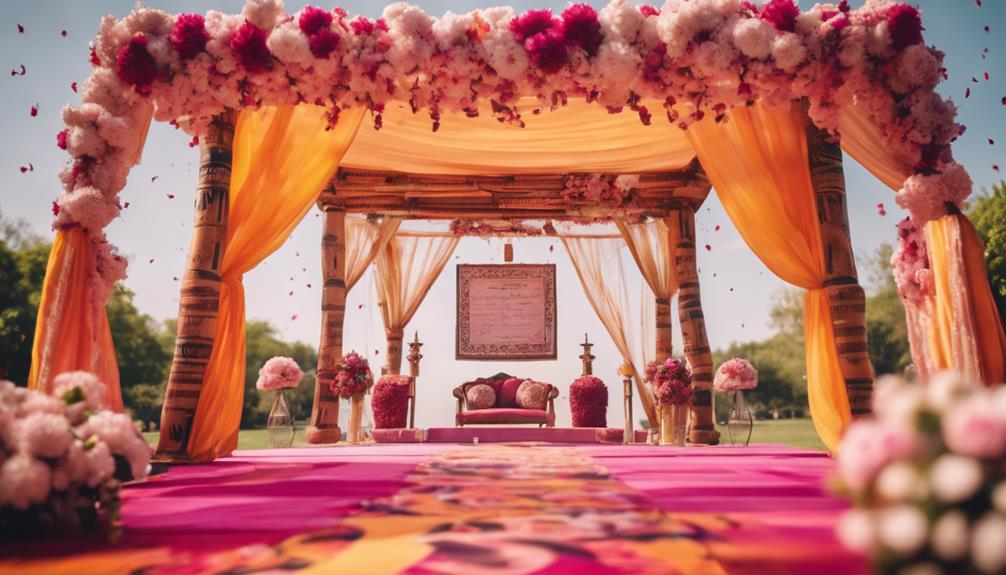
Cross-cultural couples can start on a fascinating journey of embracing diversity in wedding planning, where they thoughtfully merge traditions to create a truly unique and inclusive celebration. By blending cultural elements, such as ceremonies, food, and decor, they honor each partner's background and values. This blending of cultures fosters understanding and unity between families, creating a meaningful and enriching experience that showcases the beauty of different traditions.
To achieve a harmonious blend of cultures, couples can:
- Incorporate traditional attire: Wear attire that reflects each partner's cultural heritage, such as a kimono or sari, to add a personal touch to the celebration.
- Merge ceremony rituals: Combine rituals from different cultures or religions to create a unique and meaningful ceremony that honors both backgrounds.
- Serve traditional cuisine: Offer a variety of dishes from each partner's cultural heritage to create a culinary experience that celebrates diversity.
- Decorate with cultural symbols: Incorporate cultural symbols, such as the Chinese dragon or Indian rangoli, to add a personal touch to the decor.
Creating a Harmonious Cultural Blend
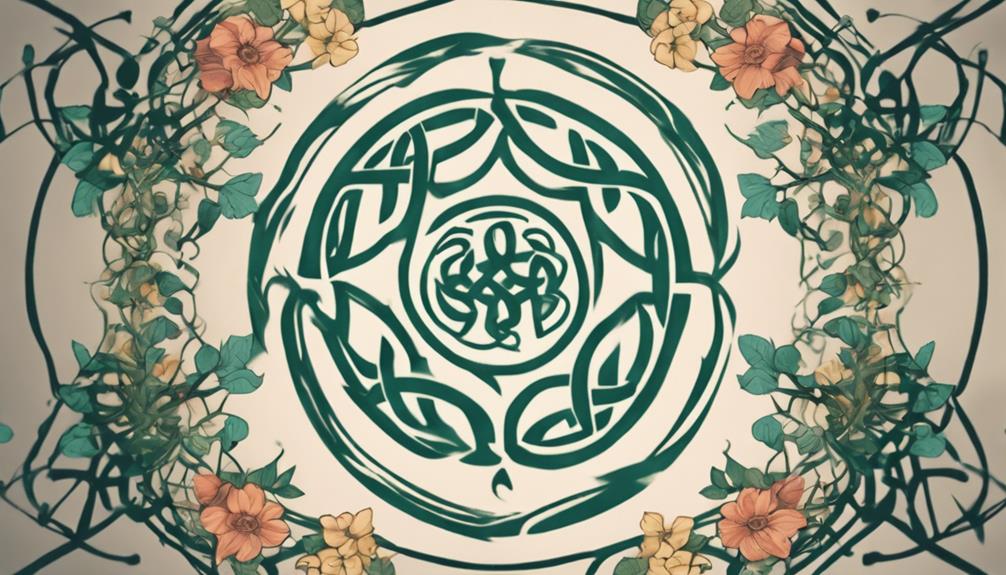
They successfully merge their cultural backgrounds by thoughtfully selecting elements that honor their individual heritages. Cross-cultural couples blend their backgrounds by incorporating unique elements from each culture into their wedding ceremonies. This cultural blending can be achieved through various aspects such as attire, decor, music, and food choices.
Creating a harmonious cultural blend involves respecting and honoring the traditions and customs of both partners. By doing so, couples can create a wedding that's a reflection of their diverse backgrounds. Embracing and celebrating both cultures allows cross-cultural couples to unite their families and create a memorable and inclusive wedding experience.
Their special day becomes a beautiful representation of their blended heritage, fostering a deeper understanding and appreciation for their cultural differences. Ultimately, this harmonious cultural blend enables couples to start their new life together on a strong foundation of mutual respect and love.
Frequently Asked Questions
What Are Examples of Cultural Blending?
Cultural blending is exemplified in culinary traditions, where diverse flavors and dishes are merged.
For instance, Nigerian and Mexican cuisines are fused, combining the spices of jollof rice with the bold flavors of tacos. Similarly, Italian pasta dishes are paired with Korean barbecue, while Spanish paella is served alongside Greek mezze.
These unique fusions showcase the creative blending of cultural food traditions.
What Is the Blending of Two Cultures?
She defines the blending of two cultures as the integration of customs, traditions, and elements from both backgrounds into a unified whole.
This process involves combining diverse elements like food, attire, music, decor, and ceremonies to reflect the couple's multicultural identity.
What Is Blending or Mixture of Cultures?
According to a study, 42% of married couples in the US are in intercultural relationships.
Blending or mixture of cultures in weddings refers to the incorporation of traditions, customs, and elements from different cultural backgrounds.
This fusion involves merging rituals, ceremonies, attire, decor, music, and food to create a unique and inclusive celebration, honoring both families' heritage and symbolizing unity, respect, love, and diversity.
What Is an Example of Culture Mixing?
Cross-cultural couples often showcase their diverse backgrounds through creative culinary fusions. For instance, a Nigerian-Mexican couple served haggis and Indian curry at their wedding, blending Scottish, Mexican, and Indian flavors.
Another example is combining Italian pasta dishes with Korean barbecue for a unique dining experience. These couples demonstrate the beauty of cultural mixing, celebrating their differences through food.
Conclusion
As cross-cultural couples navigate the complexities of merging their backgrounds, they often stumble upon unexpected connections between their traditions.
Coincidentally, the Japanese tea ceremony and Indian puja rituals share a common thread – the reverence for the sacred and the importance of mindfulness.
By embracing these coincidences, couples can create a harmonious cultural blend, weaving together the threads of their diverse heritage to form a rich tapestry of love and understanding.

